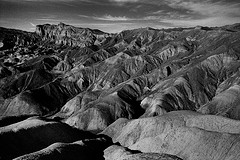Volumetric Methods in Visual Effects (SIGGRAPH 2010 course)
(Looking for the 2011 courses?)
Course Description
Computer generated volumetric elements such as clouds, fire, and whitewater, are becoming commonplace in movie production. The goal of this course is to familiarize attendees with the technology behind these effects. In addition to learning the basics of the technology, attendees will also be exposed to the rationales behind the sometimes drastically different development choices taken and solutions employed by the presenters, who have experience with and have authored proprietary and commercial volumetrics tools.
The course begins with a quick introduction to generating and rendering volumes. We then present a production usable volumetrics toolkit, focusing on the feature set and why those features are desirable. Finally we present the specific tools developed at Double Negative, DreamWorks, Sony Imageworks, Rhythm & Hues, and Side Effects Software. The production system presentations will delve into development history, how the tools are used by artists, and the strengths and weaknesses of the software. Specific focus will be given to the approaches taken in tackling efficient data structures, shading architecture, multithreading/parallelization, holdouts, and motion blurring.
Authors
Magnus Wrenninge – Sony Pictures Imageworks
Nafees Bin Zafar – DreamWorks Animation
Jeff Clifford & Gavin Graham – Double Negative
Devon Penney & Janne Kontkanen – DreamWorks Animation
Jerry Tessendorf – Rhythm & Hues Studios
Andrew Clinton – Side Effects Software
Links
- PDF document (68.5 MB)
- Discussion forum (at Google Groups)

{ 8 comments… read them below or add one }
This was an excellent course. The material was presented logically and comprehensively, following a clear train of logic that provided me with the insight I needed as a TD while being challenging enough to push me and get me wanting to write some code. Very exciting stuff and exactly the kind of presentation that keeps me coming back to Siggraph every year. Well done, guys.
Thanks Andy, we really appreciate the kind words. It’s a lot of ground to cover, happy to hear that it came across somewhat coherent!
Very impressive and excellent presentation. Just the right balance of science, art and technology for me to chew on for a while. I shall make this my daily read for a while.
Thanks for your comment Macha. And if you have any questions, the google discussion group is open for posting.
magnus, really impressive course …really good images and very clear and detailed in presentation. thank you very much.
So when does the book come out?
It’s remarkable how many words about “volume rendering” gadgets how to mimic things and not how to render the actual scalar fields. It’s probably useful for game developers not for real volumetric data like big CT data.
excellent course
{ 7 trackbacks }